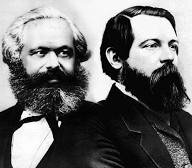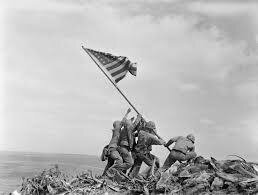- Messages
- 1,102
It was between him or Thompson. Not just the talent but a huge figure in the conservation movement.
Follow along with the video below to see how to install our site as a web app on your home screen.
Note: This feature may not be available in some browsers.
It was between him or Thompson. Not just the talent but a huge figure in the conservation movement.


For @SnoopRob fir calling out us commies on the hockey thread.
The Communist Manifesto, (“Manifesto of the Communist Party”), pamphlet (1848) written by Karl Marx and Friedrich Engels to serve as the platform of the Communist League. It became one of the principal programmatic statements of the Europeansocialist and communist parties in the 19th and early 20th centuries.
The Communist Manifesto embodies the authors’ materialistic conception of history (“The history of all hitherto existing society is the history of class struggles”), and it surveys that history from the age of feudalism down to 19th-century capitalism, which was destined, they declared, to be overthrown and replaced by a workers’ society. The communists, the vanguard of the working class, constituted the section of society that would accomplish the “abolition of private property” and “raise the proletariat to the position of ruling class.”
The Communist Manifesto opens with the dramatic words “A spectre is haunting Europe—the spectre of communism” and ends by stating, “The proletarians have nothing to lose but their chains. They have a world to win. Workingmen of all countries, unite.”
These guys went on to live interesting lives as well.
FIFY. Damn you academics with critical reading skills.Hmmmm. Did something happen #OTD in relation to The Communist Manifesto?
A relatively rare wealthy individual who did well for society in general, the state of NC, and last but not least, UNC. This, with his own unique photographic abilities.Missed this by a couple of days (and technically one year). I don't know how many people actually know about this blog (which is on hiatus at present) dedicated to the photography of Hugh Morton.
Hugh Morton’s 103rd – A View to Hugh
Who was Hugh Morton anyway? He was definitely for a good deal of his life kind of the UNC Forrest Gump with a camera.
Here's a Biography: Hugh Morton - Grandfather Mountain Founder
A relatively rare wealthy individual who did well for society in general, the state of NC, and last but not least, UNC. This, with his own unique photographic abilities.

#OTD 1945 b. William Oliver Swofford in N.Wilkesboro. A Morehead Scholar @UNC, his college band unsuccessful, he recorded ‘Good Morning Starshine’ from the musical ‘Hair’ as OLIVER & hit #3 on the Billboard Easy Listening Charts in ‘69. Two months later, ‘Jean’ hit #2. He had modest success in the ‘70s, left music, had a good career in sales, & passed away in 2000. Brother John was Commissioner of the Atlantic Coast Conference & Quarterbacked @UNC. Another brother played football @dook.
Oliver, North Wilkesboro Native, a Sixties Pop Sensation
#OTD 1945 b. William Oliver Swofford in N.Wilkesboro. A Morehead Scholar @UNC, his college band unsuccessful, he recorded ‘Good Morning Starshine’ from the musical ‘Hair’ as OLIVER & hit #3 on the Billboard Easy Listening Charts in ‘69. Two months later, ‘Jean’ hit #2. He had modest success in the ‘70s, left music, had a good career in sales, & passed away in 2000. Brother John was Commissioner of the Atlantic Coast Conference & Quarterbacked @UNC. Another brother played football @dook.
Oliver, North Wilkesboro Native, a Sixties Pop Sensation
I saw that Ed Sullivan showOliver (Swofford) appeared on the Ed Sullivan show. After Oliver had sung his song(s), Ed Sullivan walked on stage to stand next to Oliver and motioned out into the audience and a camera zoomed in on Oliver's parents and John Swofford. Ed Sullivan introduced them and they got a round of applause. Then Ed Sullivan announced that John Swofford held the UNC record for the most touchdown passes in a single game. A bigger round of applause ensued. My older brother told me that in a home game against the Air Force Academy, starting QB (maybe Gayle Bomar) had gotten injured early on and John Swofford played most of the game. The Air Force Academy was notorious in those days for having a poor defense and John Swofford just tore them apart with his passing.

